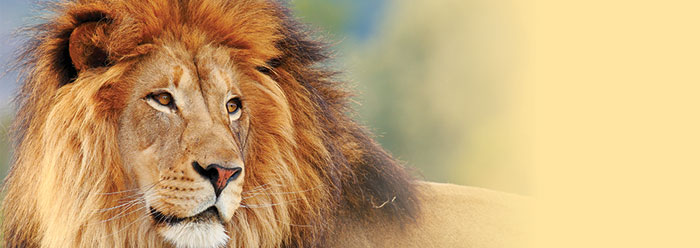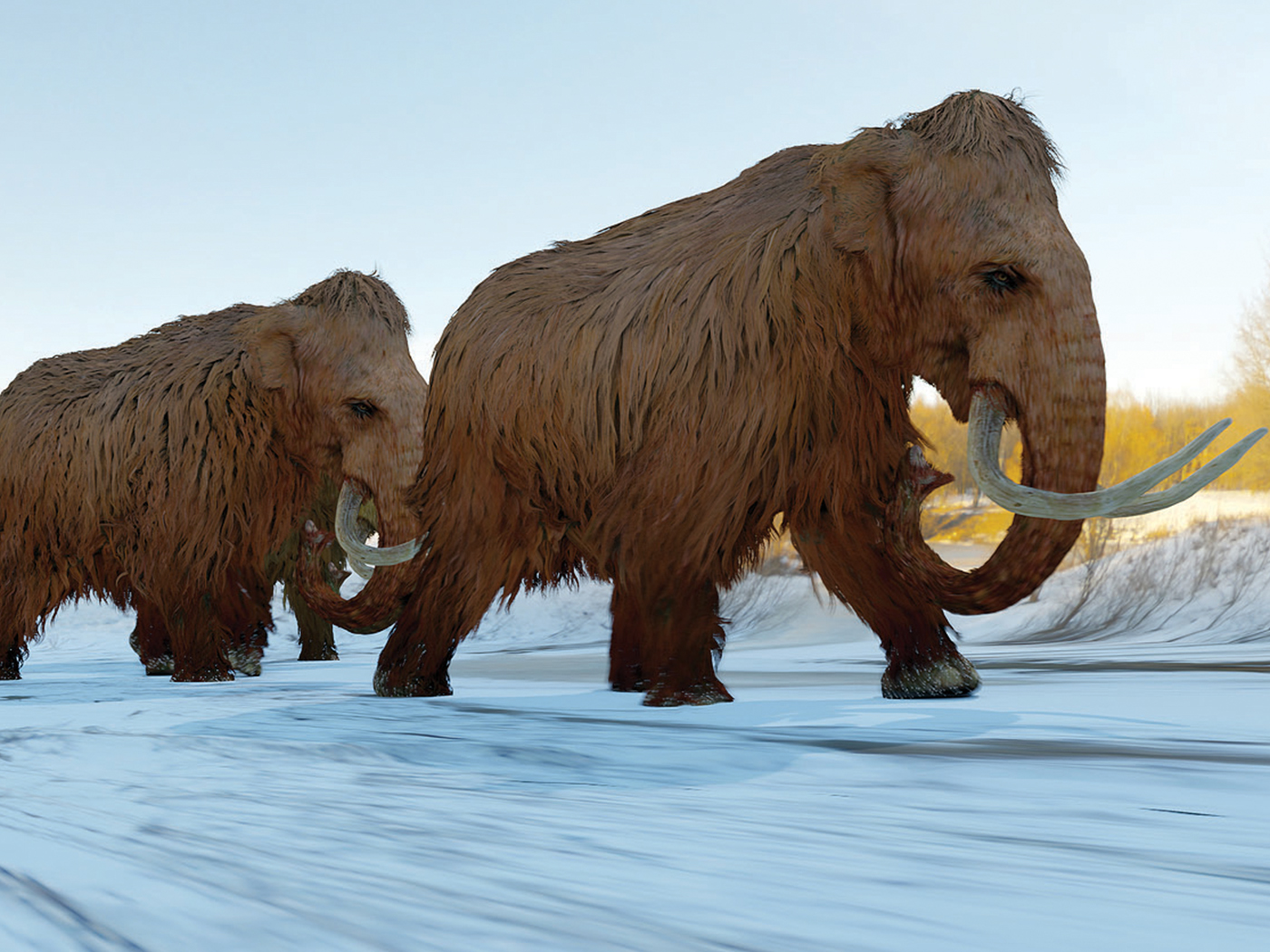A male lion in his prime with a grand and bushy mane rarely fails to impress. Ancient peoples carved lions onto stone walls, and prophets spoke of lions in the Scriptures. But of all the cats found around the world, why do only lions grow manes? Lion researcher Bruce Patterson from the Field Museum of Natural History in Chicago has made answering these kinds of questions his life’s work. His research helped answer why some male African lions have puny manes while others possess majestic ones. Those answers reveal intriguing details about creation and its great Creator.
Hybrids between lions and other cat species show that lion-specific genes express manes. Evolutionary biologists often assume that an animal expresses a given trait to increase its species’ survival rate. But they have a hard time figuring out what adaptive advantage a mane provides. Some male lions grow virtually no manes and they thrive just fine, but female lions can occasionally grow a mane, further complicating the origins question. What causes the lion’s mane?
It Has to Get Really Chilly
Patterson identified three contributing factors of lion mane development.1 First, since males develop manes and females typically don’t, male hormones play a key role. But male lions with virtually no manes have similar hormone levels, so other factors must contribute. Patterson’s work demonstrated the role of temperature in lion mane development. It turns out that lions reared in places with cold winter nights often grow glorious manes, and lions that grow up in warmer, more southerly African climates likely end up with virtually no mane growth.
Patterson wanted to rule out other wild conditions like nutrition or social ostracism, so he focused on lions in zoos—environments where researchers can control many of these factors. Crossbreeding zoo lions revealed “that up to half the variation in mane length and density (but not color) is attributable to mean January temperature—the colder the temperature, the longer and fuller the mane.”1
Could external temperature alone somehow tinker with a young lion’s mane growth patterns inside its body? Temperature cannot do this directly any more than drumming fingertips on a table top can somehow insert words into a computer. You need a keyboard for that, and the keyboard needs to be connected to the computer, and the computer needs to have software telling what each keystroke means and what to do with it. Likewise for the lion.
How do we know that only certain conditions stimulate traits like mane growth? Well, drumming fingertips on a lion’s neck will probably not produce or lengthen a mane, and might instead lead to personal injury. Therefore, lions must have internal programming that specifies a particular low temperature as a mane-hair stimulus. Do lions contain temperature sensors integrated with biological hair growth machinery?
Living Thermometers
Anatomists know about biological thermometers. Mammals use specialized nerve endings that detect and send temperature data to the brain. Brains have instructions for processing the data and sending signals as suitable responses. For example, when the human body’s core temperature drops below a certain threshold, it normally responds by sending a message telling muscles to uncontrollably shiver, raise goose bumps, or constrict blood vessels in arms and legs to concentrate warm blood toward the torso.
Putting these pieces together, future research should reveal that young lions detect their body temperature during cold winter nights, and some centralized processing unit outputs suitable responses. It would then send its signal, possibly using hormones, to neck area hair follicles. Each follicle has hair-producing cells arranged like tiny test tubes. They have cellular timers to control hair production. A follicle grows a hair until its timer expires, then it rests. Longer times make longer hairs. Follicle cells in the young lion’s body decode signals that specify how to dial up or down their hair growth timer.
If a computer with perfectly integrated hardware and software demonstrates complicated design, then the lion’s mane length-adjustment system does too.
No Rain, No Mane
So far, we see that maleness and low temperatures contribute to lion mane hair length. But Patterson and others’ research revealed a third factor—“where there is no rain, there is no mane.”1 He showed that lions of the Greater Tsavo Ecosystem in southern Kenya grew manes in climates with regular rainfall but not in hot and dry places. He wrote, “Correlations of manes with nightly temperatures and rainfall explain why lions in the hotter Kalahari and Sahara deserts can have sizeable manes—there, water is available during summer’s heat while winter nights are cold.”1
This means that mane control systems must have software that specifies hydration as an input relevant to mane length, plus biological equipment that detects internal hydration. Biochemists are just now uncovering how these features function. In fruit flies, certain nerve cells express specific proteins—roundworms and rats have similar proteins—that sense hydration levels of internal body fluids just outside the cell.2 The neurons transmit those data to the brain to determine whether the organism should eat food or drink water.
These results imply an even more complicated internal network than a simple single input-output for mane development. Instead, features inside the lion collect and interpret various inputs to produce outputs that range from no manes to big bushy manes. If a male lion is living near deserts, can readily access water during hot summers, and lives through cold winters, then it grows a long mane. If a male lion is living near deserts, cannot readily access water, but endures cold winters, it also grows a mane, but not as robust as the former. Other combinations lead to short or very short manes.
What’s the Mane Point about God?
What do these lion mane development details reveal about creation and the Creator? Since the same outside conditions of temperature and hydration do not produce manes in other creatures, we know that precise physical and informational structures inside lions detect the factors, sort the data, and react according to script. Engineers build detectors. Intelligent people build machines that sort through specific inputs. Craftsmen build machines that react to specified inputs, like computers that place English characters on a screen in accordance with specified keystrokes. In like manner, an Engineer, intelligent Person, and careful Craftsman fashioned lions to make a range of manes.
Lion manes add to the many evidences in creation that make God’s divine nature so “clearly seen,” according to Romans 1:20. He is supernatural, not natural. Because natural factors like temperature and humidity never integrate hardware and software for a specific purpose like adjusting hair length, a supernatural source must have integrated it. Lion mane development clearly reveals our great Creator’s divine nature.
References
- Patterson, B. D. 2007. On the Nature and Significance of Variability in Lions. Evolutionary Biology. 34 (1): 55-60.
- The gene nanchung within interoceptive subesophageal zone neurons expresses the protein Nanchung, which appears to directly sense internal hemolymph osmolality in fruit flies. Similar proteins probably perform the same role in other animals. See Jourjine, N. et al. 2016. Coupled Sensing of Hunger and Thirst Signals Balances Sugar and Water Consumption. Cell. 166 (4): 855-866.
* Mr. Thomas is Science Writer at the Institute for Creation Research.







